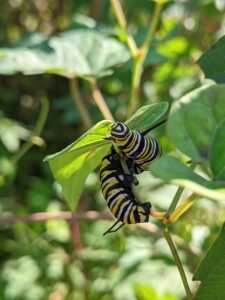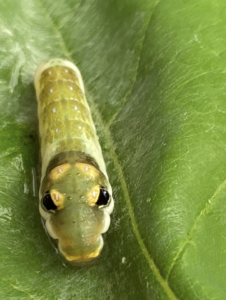More than Monarchs
I originally became interested in the topic of host plant and pollinator relationships from the same concerning headline that has motivated much of the general public; that is, the Monarch Butterfly’s fluctuating conservation status as either Threatened or, at times, Endangered. Though the call-to-arms for ecological gardening has been greatly aided by the public’s attention to this single species, I feel we can get hyper-fixated on saving only the most eye-catching species or those that have a compelling story behind them. The Xerces Society, a conservation organization that focuses largely on insects, notes that 29 species of butterflies are listed as Endangered in the U.S and 6 listed as Threatened. I’m sure that most everyone, myself included, could not name a single one of those species besides the Monarch Butterfly. The great abundance of insect diversity out there should compel us gardeners to plant a greater diversity of plants to cover our bases. We all know by now how important it is to plant native species of the Milkweed genus (Asclepias), due to the Monarch caterpillar having not just a preference for such plants, but an absolute necessity to feed on milkweed foliage for them to form a pupa and emerge a beautiful, adult butterfly.
Ecological Gardening
Fascination with pollinator plants has been a trend in the gardening/horticulture community for a while now, and although this is a great thing, it is really one half of the whole picture in terms of ecological gardening. Using pollinator plants with dazzling floral displays for the homeowner to enjoy, while also providing a food source in the form of nectar and/or pollen for equally beautiful insects is what really drives this movement. But for every breathtaking adult butterfly or elegant adult moth, it starts off as an insignificant egg. Just because you observed a pollinator feeding on the flowers in your garden does not mean that that same plant will be used for egg-laying and eventual caterpillar feeding. The caterpillars of any pollinating insect do not utilize flowers, only the flying adults. This is why I stress diversifying your plant portfolio in the garden! A native bunch-grass, Big Bluestem (Andropogon gerardii), is the preferred host-plant for the caterpillars of multiple species of Skipper Butterflies. All such grasses have wind-pollinated seeds, and therefore would not be foremost on anyone’s must-have pollinator plant list. They do not offer a food source for adult butterflies, but why would we discount such plants when they are so crucial for the development of future pollinators? The same can be said for many trees, some of the most ecologically important of which (such as Oaks, Willows, Maples, etc.) are primarily wind-pollinated. You may not think a tree would attract essential pollinators, but the caterpillars of dozens to hundreds of different butterfly and moth species can be supported by planting such trees.
Spicebush Swallowtail
One of the better known and most beloved caterpillars is that of the Spicebush Swallowtail. Most people can recognize it from the characteristic eye-like spots on its backside, appearing like the angry face of a snake, if you are lucky enough to spot one before they roll themselves up in the leaf of its preferred Spicebush or Sassafras. Both of these species have rather diminutive yellow flowers, not the kind of characteristic that would land either of them on a pollinator plant list, but planting either one would give you the best possible shot of noticing the stunning caterpillar in your own yard. In the Yew Dell Nursery, we also put out a “super pollinators” list, which is comprised almost entirely of herbaceous perennials. But I challenge every gardener to take the initiative to mix it up! Utilize some grasses or sedges that add textural value to the garden. Diversify with herbs such as Fennel and Parsley- which look great, have culinary use, and provide forage for some awesome caterpillars. Expanding the biological diversity of your garden will offer food for a greater number of different insects and in turn, those insects can provide food for a greater diversity of birds!

Jeff Margreiter
Yew Dell Nursery & greenhouse Manager




